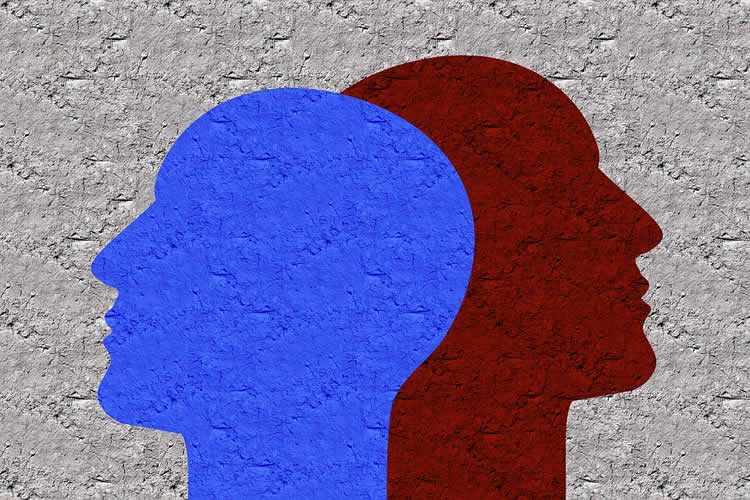Summary: Researchers have designed a new math model that could help explain social behaviors in a number of difference species.
Source: University of Exeter.
A University of Exeter scientist has helped develop an innovative mathematical model for exploring why some individuals evolve to be genetically programmed to be nice, while others stay nasty.
Dr Sasha Dall, Senior Lecturer in Mathematical Ecology, and a team of international colleagues have designed a new mathematical framework for examining social behaviour in a range of different species that will help advance our understanding of the evolution of sociality.
The theory of kin selection has for some time allowed biologists to explain why some animals and other organisms adopt altruistic behaviour, at their own expense, for the benefit of their relatives- worker bees laying down their lives to promote the welfare of their mother, the Queen, for example. But up until now scientists have not been able to explain the role of genetic polymorphism, or why some individuals appear to be genetically programmed to help others whilst living side-by-side with others who tend to exploit their generosity.
Using colony-living microbes as inspiration to explore why some individuals are by nature generous and others less so, the researchers produced an innovative model of social evolution that allows them to understand how far this is likely to be influenced by conditioning or the surrounding environment.

They found that the behaviour of individuals can often evolve to be determined by a set of inherited genetic tendencies that accurately predict social relationships, including their likely relatedness to other members of their community, and their surroundings rather than in direct response to what they sense or experience.
Dr Dall, a co-author on the paper, which is published in the journal PLOS Computational Biology, said: “As humans our behaviours are flexible and we base what we are meant to do on what we see after processing information about our world. However, some species rely on inherited instructions on what to do – individuals behave differently according to which specific genetic variants they are born with. What we have been able to show is how you can get a situation where you end up with distinct levels of genetically determined niceness coexisting within populations.”
Lead author on the paper Professor Olof Leimar, of Stockholm University, said: “Social evolution theory hasn’t previously addressed genetic polymorphism. We have developed a model that allows us to explore this within a general framework alongside other behavioural influences. Our hope and aim is to do further work in this area to test our model experimentally.”
Funding: This work was funded by a Leverhulme Trust International Network Grant to the team.
Source: Louise Vennells – University of Exeter
Image Source: This NeuroscienceNews.com image is in the public domain.
Original Research: Full open access research for “Genes as Cues of Relatedness and Social Evolution in Heterogeneous Environments” by Olof Leimar, Sasha R. X. Dall, Peter Hammerstein, and John M. McNamara in PLOS Computational Biology. Published online June 24 2016 doi:10.1371/journal.pcbi.1005006
[cbtabs][cbtab title=”MLA”]University of Exeter. “Nasty or Nice? Math Model Explains Why Some Individuals Are Nicer Than Others.” NeuroscienceNews. NeuroscienceNews, 24 June 2016.
<https://neurosciencenews.com/math-model-niceness-psychology-4561/>.[/cbtab][cbtab title=”APA”]University of Exeter. (2016, June 24). Nasty or Nice? Math Model Explains Why Some Individuals Are Nicer Than Others. NeuroscienceNews. Retrieved June 24, 2016 from https://neurosciencenews.com/math-model-niceness-psychology-4561/[/cbtab][cbtab title=”Chicago”]University of Exeter. “Nasty or Nice? Math Model Explains Why Some Individuals Are Nicer Than Others.” https://neurosciencenews.com/math-model-niceness-psychology-4561/ (accessed June 24, 2016).[/cbtab][/cbtabs]
Abstract
Genes as Cues of Relatedness and Social Evolution in Heterogeneous Environments
There are many situations where relatives interact while at the same time there is genetic polymorphism in traits influencing survival and reproduction. Examples include cheater-cooperator polymorphism and polymorphic microbial pathogens. Environmental heterogeneity, favoring different traits in nearby habitats, with dispersal between them, is one general reason to expect polymorphism. Currently, there is no formal framework of social evolution that encompasses genetic polymorphism. We develop such a framework, thus integrating theories of social evolution into the evolutionary ecology of heterogeneous environments. We allow for adaptively maintained genetic polymorphism by applying the concept of genetic cues. We analyze a model of social evolution in a two-habitat situation with limited dispersal between habitats, in which the average relatedness at the time of helping and other benefits of helping can differ between habitats. An important result from the analysis is that alleles at a polymorphic locus play the role of genetic cues, in the sense that the presence of a cue allele contains statistical information for an organism about its current environment, including information about relatedness. We show that epistatic modifiers of the cue polymorphism can evolve to make optimal use of the information in the genetic cue, in analogy with a Bayesian decision maker. Another important result is that the genetic linkage between a cue locus and modifier loci influences the evolutionary interest of modifiers, with tighter linkage leading to greater divergence between social traits induced by different cue alleles, and this can be understood in terms of genetic conflict.
“Genes as Cues of Relatedness and Social Evolution in Heterogeneous Environments” by Olof Leimar, Sasha R. X. Dall, Peter Hammerstein, and John M. McNamara in PLOS Computational Biology. Published online June 24 2016 doi:10.1371/journal.pcbi.1005006






